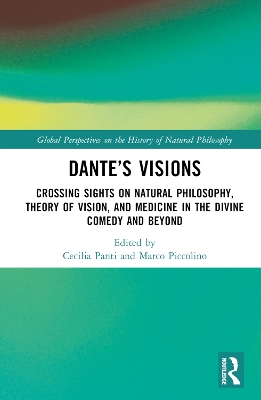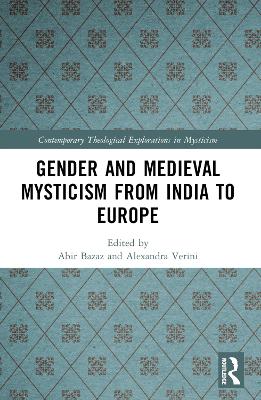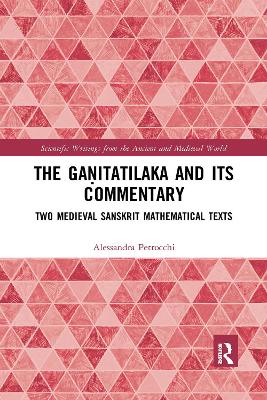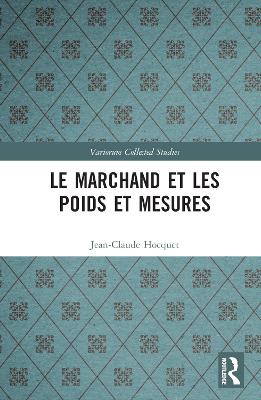Reflections on Observational Astronomy in the Medieval Islamic Period
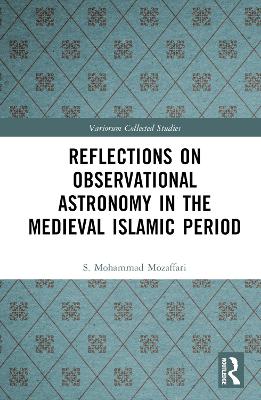 portes grátis
portes grátis
Reflections on Observational Astronomy in the Medieval Islamic Period
Mozaffari, S. Mohammad
Taylor & Francis Ltd
12/2024
344
Dura
9781032772349
Pré-lançamento - envio 15 a 20 dias após a sua edição
Descrição não disponível.
Introduction
Part I. Solar Astronomy
Chapter 1. Limitations of Methods: The Accuracy of the Values Measured for the Earth's/Sun's Orbital Elements in the Middle East, 800-1500 ce
Part II. Lunar Astronomy and Theory of Eclipses
Chapter 2. How Natural Phenomena Were Justified in Medieval Science: The Situation of Annular Eclipses in Medieval Astronomy
Chapter 3. Wabkanawi's Observation and Calculations of the Annular Solar Eclipse of 30 January 1283
Chapter 4. Biruni's Examination of the Path of the Centre of the Epicycle in Ptolemy's Lunar Model
Chapter 5. Solar and Lunar Observations at Istanbul in the 1570s
Part III. Planetary Astronomy
Chapter 6. Four-Point Method for Determining the Eccentricity and the Direction of the Apsidal Lines of the Sun and Superior Planets
Chapter 7. Planetary Latitudes in Medieval Islamic Astronomy: An Analysis of the Non-Ptolemaic Latitude Parameter Values in the Maragha and Samarqand Astronomical Traditions
Chapter 8. Holding or Breaking with Ptolemy's Generalization: Considerations about the Motion of the Planetary Apsidal Lines in Medieval Islamic Astronomy
Chapter 9. Astronomical Observations at the Maragha Observatory in the 1260s-70s
Part IV. Stellar Astronomy
Chapter 10. A Medieval Bright Star Table: The Non-Ptolemaic Star Table in the Ilkhani Zij
Part V. Observational Instrumentation
Chapter 11. Ghazan Khan's Astronomical Innovations at Maragha Observatory
Part I. Solar Astronomy
Chapter 1. Limitations of Methods: The Accuracy of the Values Measured for the Earth's/Sun's Orbital Elements in the Middle East, 800-1500 ce
Part II. Lunar Astronomy and Theory of Eclipses
Chapter 2. How Natural Phenomena Were Justified in Medieval Science: The Situation of Annular Eclipses in Medieval Astronomy
Chapter 3. Wabkanawi's Observation and Calculations of the Annular Solar Eclipse of 30 January 1283
Chapter 4. Biruni's Examination of the Path of the Centre of the Epicycle in Ptolemy's Lunar Model
Chapter 5. Solar and Lunar Observations at Istanbul in the 1570s
Part III. Planetary Astronomy
Chapter 6. Four-Point Method for Determining the Eccentricity and the Direction of the Apsidal Lines of the Sun and Superior Planets
Chapter 7. Planetary Latitudes in Medieval Islamic Astronomy: An Analysis of the Non-Ptolemaic Latitude Parameter Values in the Maragha and Samarqand Astronomical Traditions
Chapter 8. Holding or Breaking with Ptolemy's Generalization: Considerations about the Motion of the Planetary Apsidal Lines in Medieval Islamic Astronomy
Chapter 9. Astronomical Observations at the Maragha Observatory in the 1260s-70s
Part IV. Stellar Astronomy
Chapter 10. A Medieval Bright Star Table: The Non-Ptolemaic Star Table in the Ilkhani Zij
Part V. Observational Instrumentation
Chapter 11. Ghazan Khan's Astronomical Innovations at Maragha Observatory
Este título pertence ao(s) assunto(s) indicados(s). Para ver outros títulos clique no assunto desejado.
Islamic Astronomy;Middle Ages;History of Science;Observational Astronomy;Islamic intellectual History
Introduction
Part I. Solar Astronomy
Chapter 1. Limitations of Methods: The Accuracy of the Values Measured for the Earth's/Sun's Orbital Elements in the Middle East, 800-1500 ce
Part II. Lunar Astronomy and Theory of Eclipses
Chapter 2. How Natural Phenomena Were Justified in Medieval Science: The Situation of Annular Eclipses in Medieval Astronomy
Chapter 3. Wabkanawi's Observation and Calculations of the Annular Solar Eclipse of 30 January 1283
Chapter 4. Biruni's Examination of the Path of the Centre of the Epicycle in Ptolemy's Lunar Model
Chapter 5. Solar and Lunar Observations at Istanbul in the 1570s
Part III. Planetary Astronomy
Chapter 6. Four-Point Method for Determining the Eccentricity and the Direction of the Apsidal Lines of the Sun and Superior Planets
Chapter 7. Planetary Latitudes in Medieval Islamic Astronomy: An Analysis of the Non-Ptolemaic Latitude Parameter Values in the Maragha and Samarqand Astronomical Traditions
Chapter 8. Holding or Breaking with Ptolemy's Generalization: Considerations about the Motion of the Planetary Apsidal Lines in Medieval Islamic Astronomy
Chapter 9. Astronomical Observations at the Maragha Observatory in the 1260s-70s
Part IV. Stellar Astronomy
Chapter 10. A Medieval Bright Star Table: The Non-Ptolemaic Star Table in the Ilkhani Zij
Part V. Observational Instrumentation
Chapter 11. Ghazan Khan's Astronomical Innovations at Maragha Observatory
Part I. Solar Astronomy
Chapter 1. Limitations of Methods: The Accuracy of the Values Measured for the Earth's/Sun's Orbital Elements in the Middle East, 800-1500 ce
Part II. Lunar Astronomy and Theory of Eclipses
Chapter 2. How Natural Phenomena Were Justified in Medieval Science: The Situation of Annular Eclipses in Medieval Astronomy
Chapter 3. Wabkanawi's Observation and Calculations of the Annular Solar Eclipse of 30 January 1283
Chapter 4. Biruni's Examination of the Path of the Centre of the Epicycle in Ptolemy's Lunar Model
Chapter 5. Solar and Lunar Observations at Istanbul in the 1570s
Part III. Planetary Astronomy
Chapter 6. Four-Point Method for Determining the Eccentricity and the Direction of the Apsidal Lines of the Sun and Superior Planets
Chapter 7. Planetary Latitudes in Medieval Islamic Astronomy: An Analysis of the Non-Ptolemaic Latitude Parameter Values in the Maragha and Samarqand Astronomical Traditions
Chapter 8. Holding or Breaking with Ptolemy's Generalization: Considerations about the Motion of the Planetary Apsidal Lines in Medieval Islamic Astronomy
Chapter 9. Astronomical Observations at the Maragha Observatory in the 1260s-70s
Part IV. Stellar Astronomy
Chapter 10. A Medieval Bright Star Table: The Non-Ptolemaic Star Table in the Ilkhani Zij
Part V. Observational Instrumentation
Chapter 11. Ghazan Khan's Astronomical Innovations at Maragha Observatory
Este título pertence ao(s) assunto(s) indicados(s). Para ver outros títulos clique no assunto desejado.


